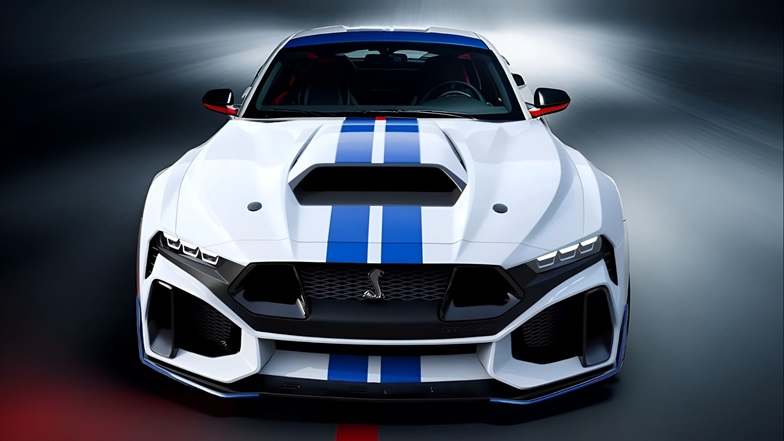Volkswagen is gearing up to revolutionize its lineup of electric vehicles with a significant update to its Modular Electric Drive Matrix (MEB) platform. These enhancements will refresh the company’s popular ID. family, delivering faster charging, improved designs, and cutting-edge technology. Let’s dive into what’s coming and how these changes will position Volkswagen at the forefront of the EV market.

What’s Changing in 2026?
Volkswagen’s head of R&D, Kai Grünitz, recently revealed that the MEB platform would undergo major updates starting in 2026. This evolution is aimed at keeping VW’s electric lineup competitive in an industry that’s rapidly advancing. Let’s break down the expected improvements.
Faster Charging Times
One of the standout changes is an improvement in charging technology. Over the years, Volkswagen has steadily reduced charging times for its MEB-based models. The initial ID. lineup required approximately 35 minutes to charge from 10% to 80%. Today’s ID.7 Pro S has cut that time to 26 minutes, thanks to its ability to handle up to 200 kW of peak charging power.
By 2026, models like the upcoming ID.2 aim to reduce this time even further—to just 20 minutes—despite a lower peak charging power of 125 kW. These advancements will make Volkswagen’s EVs some of the fastest-charging options in the market.
A New Design Language
Volkswagen plans to introduce a more distinct “Volkswagen” design language with the launch of the ID.2. This aesthetic will blend modernity with the brand’s heritage, setting it apart from competitors. Models like the ID.3 are also expected to receive a restyling to keep them fresh until their eventual replacement in 2029 by the ninth-generation Golf, built on the all-new SSP platform.
Affordable Batteries
Another key upgrade will be the introduction of less expensive battery technology. These cost-effective batteries will not only lower production costs but also make EVs more accessible to a wider range of consumers, potentially boosting adoption rates.
Current vs. Future Volkswagen EVs
| Feature | Current MEB Platform (2023) | Updated MEB Platform (2026) |
|---|---|---|
| Charging Time (10-80%) | 26 minutes (ID.7 Pro S) | ~20 minutes (ID.2) |
| Max Charging Power | 200 kW | 125-200 kW (optimized charging curve) |
| Design | Streamlined and modern | “Volkswagen” heritage-inspired |
| Battery Cost | Standard | Lower-cost, affordable batteries |
| Platform Lifespan | Until 2029 | Transition to SSP platform post-2029 |
The ID.2: A Game Changer
Set to debut in late 2025 or early 2026, the ID.2 will embody the essence of Volkswagen’s vision for the future of electric vehicles. This compact EV will feature:
- Affordable pricing for mass-market appeal.
- A more heritage-focused design reflecting Volkswagen’s roots.
- Cutting-edge charging technology, making it one of the most efficient EVs in its class.
- Compatibility with the enhanced MEB platform, ensuring it delivers both performance and practicality.
What About the SSP Platform?
Volkswagen’s innovations won’t stop with the MEB platform. The company is preparing to transition to the SSP (Scalable Systems Platform) for its future models, starting with the next-generation Golf in 2029. Here’s why the SSP platform is significant:
- Collaboration with Rivian: Volkswagen’s strategic alliance with Rivian will leverage Rivian’s expertise in software and EV technology. Grünitz described Rivian as being “more efficient and faster” than traditional automakers, likening them to the innovative approaches seen in China.
- Advanced Software: The SSP platform will include Rivian’s software capabilities combined with Volkswagen’s high-quality manufacturing standards. This partnership aims to create EVs that are not only reliable but also technologically advanced.
Expanding Beyond Electric
Volkswagen is also making changes to its internal combustion engine (ICE) lineup. The Polo, for example, will receive an update to coexist with the ID.2. At the same time, the group plans to reduce its ICE offerings to align with Europe’s stringent emissions regulations.
Key Highlights from Grünitz’s Interview
- The ID.2’s SUV version will be previewed as a concept car at the 2025 Munich Motor Show.
- The Polo, which is now being produced in South Africa instead of Spain, will remain in Volkswagen’s lineup but with updates to complement the growing ID. family.
- The SSP platform will be a cornerstone of Volkswagen’s future, integrating expertise from Rivian to ensure the brand remains competitive globally.
Volkswagen’s EV Strategy: A Vision for the Future
Volkswagen’s commitment to evolving its EV lineup demonstrates its dedication to sustainability, innovation, and accessibility. By updating the MEB platform and introducing the SSP platform in collaboration with Rivian, Volkswagen is poised to lead the EV revolution.
The 2026 updates will enhance charging times, design aesthetics, and affordability, while the 2029 SSP transition will push the boundaries of technology and performance. Whether you’re a current EV enthusiast or a potential buyer, Volkswagen’s evolving lineup promises something for everyone.
Volkswagen’s 2026 updates signal a bold step forward for the brand. By combining faster charging, innovative designs, and partnerships with forward-thinking companies like Rivian, VW is setting new standards in the electric vehicle market.
If you’re in the market for an EV or simply curious about the future of mobility, Volkswagen’s upcoming ID. models and platforms are worth keeping an eye on. The question is: will these changes redefine how we view Volkswagen’s electric vehicles? Let us know your thoughts!
PEOPLE WHO READ THIS, ALSO READ




